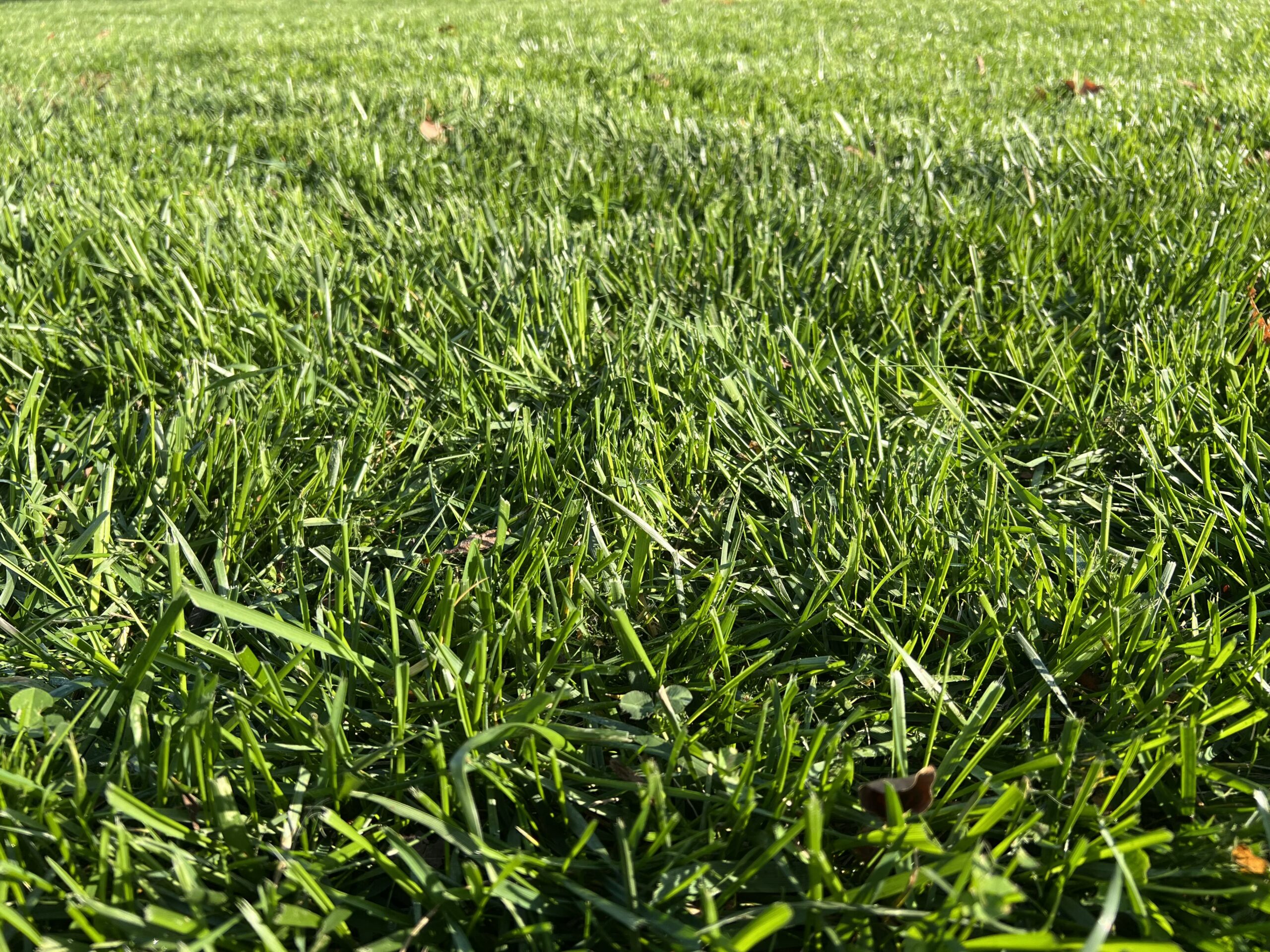This November, I am shocked to say that my grass looks greener than it does at the beginning of Spring. You read that right – it is about 45 degrees out this morning and my grass is greener than the Grinch’s bottom.
Here are three ways I’m getting extremely green grass this November:
- I prepped with a really good dethatching, aerating, and overseeding regiment back in October
- Keeping all of the leaves off of my yard (which is a constant battle)
- Putting down a winter pre-emergent
If you want to learn more about keeping your grass green this Fall, I’ll go into more detail below!
Step One: Prior preparation prevents poor performance (in your lawn)
If you are a first time reader of The Lawn Review, then you may not know that I am all about preparation. Preparing my cool season grass for seeding in the Fall starts with a good routine. Here’s mine (with links to other posts I’ve written that explain more):
- Using a dethatcher to get the dead grass off of my soil and give it room to breath
- Followed by renting a core aerator to pull up plugs of soil and create a nutritious environment for seeding
- Getting a nice spreader to evenly distribute grass seed in my lawn
If you don’t want to read all those different articles, check out my Youtube video highlighting exactly what I did to get my lawn prepped for the Fall.
Step two: Get the leaves off of my lawn
It is truly a never ending battle to keep leaves off of your lawn in the Fall. But keeping the leaves off of your lawn is a crucial step in getting your grass to thrive in November.
I have a huge Oak tree out in my backyard that absolutely dumps leaves around early November. If I don’t stay on top of it, then my entire yard will turn into a leaf pile. It is pretty, sure, but it destroys your grass’ chance of success to get fully seeded and grown in in the Fall.
All that work we did for prior preparation to prevent poor performance? Out the window.
It may seem tedious to keep the leaves off your lawn, but using some tools can help. I recently got the worlds most powerful handheld blower and it made the weekly clean up a breeze. Pair that with a standing leaf mulcher or getting a leaf vacuum and mulcher combo? The whole thing is a cake walk.
Step Three: Put down a winter pre-emergent
When I think pre-emergent, I almost always think of the Spring: trying to get the weeds killed before they really start shooting up with the warm weather. But here’s something that will blow your mind:
Weeds still grow in cold weather, just at a slower rate.
Weeds will infiltrate your lawn, start to slowly grow, then the second the soil temperature starts rising – BOOM you have a huge mess on your hands.
Putting down a winter pre-emergent like this one from our friends at The Andersons will give you a huge head start on your Spring routine. Better yet, it will make your lawn stick out compared to your neighbors. Isn’t that what this is all about?
